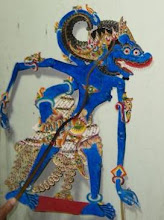This is for OSR-ists, or anybody who’s
still playing OD&D or similar games. You’re interested in
mitigating lethality (as in, burying fewer dead PCs), but you’re
like me and dislike tracking negative hit-points?
Have a standard pack of playing cards
(54, with jokers) somewhere on the table. When a PC drops to 0 HP,
deal the player a random card from the deck, face down. They can’t
look at their own card yet.
The idea is that the character is out
of the fight for good, but not necessarily dead. They suffered a
Grievous Wound. They can’t be revived on the spot, but should their
companions carry them back to home camp, the injured & dying
character might recover and survive, depending on the exact sort of
Grievous Wound they have suffered.
When the party’s out of the dungeon
and recovering, you’re finally allowed to reveal your Grievous
Wound card…
Ace of Spades: meet the Angel of
Death! You fail to recover from this grievous wound, and die. Or
maybe you were actually killed on the spot and hauling your corpse
back home was just a futile (if compassionate) effort.
Ace of Hearts:
that which doesn’t kill
you makes you stronger! After recovering from a
near-death experience, you
find that – besides
suffering no lasting ill-effect – you are now tougher because of
it: permanently increase your Constitution score by 1. But you can
only benefit from this card once in a lifetime: otherwise, it’s the
same as an Ace of Clubs/Diamonds.
Ace of Clubs or Diamonds: you
got lucky! The wound wasn’t actually that bad, and in the end you
recover fully, with no lasting consequences.
Suit of Spades, 2 through 10:
you survive the wound, but have suffered lasting damage to your
muscles or bones (lost a limb, perhaps). Permanently reduce your
Strength score by half the card value (1-5). Should this reduce your
Strength to zero, then you’re as good as dead: you’re forced to
retire from adventuring, and might not be able to get back on your
feet again.
Suit of Hearts, 2
through 10: you survive the wound, but will never recover fully.
Permanently reduce your Constitution score by half the card value
(1-5). Should this reduce your Constitution to zero, then your
recovery was just apparent, but you’re going to get worse and die
before you can adventure again, maybe because you caught an otherwise
minor illness which proved fatal in such a weakened state.
Suit of Clubs, 2
through 10: you survive the wound, but have suffered lasting
damage to your muscles or nerves, perhaps lost an eye or even a leg.
Permanently reduce your Dexterity score by half the card value (1-5).
Should this reduce your Dexterity to zero, then you’re as good as
dead: you’re forced to retire from adventuring, and might not be
able to get back on your feet again.
Suit of Diamonds, 2 through 10:
your body heals the wound just fine, and you survive, but… Either
it was a blow to the head, or the shock, fear and mental trauma was
too much to bear: you’ll never be the same person again.
Permanently reduce your Intelligence (if an even-numbered card) or
Wisdom (if an odd-numbered card) by half the card value. This may
result in forgetting things you used to know, such as languages, how
to cast spells, how to read and write – as befits a survivor of
severe trauma. Should either Ability score drop to zero, you can
never function as a self-sufficient individual again.
Face cards, Black:
you eventually recover from the injury, but it leaves gruesome,
horrifying scars or a permanent deformity. Your disfigurement is
impossible to conceal and repulsive to most intelligent beings: friendly
humanoids are disgusted, while hostile monsters believe you weak and
vulnerable, less of a threat. Permanently reduce your Charisma score
by 1-3 points (for a J, Q and K respectively).
Face cards, Red:
you recover from your injury fully, and it doesn’t hamper you
anymore, but it left you with some visible, cosmetic scar. Such a scar
makes you appear more rugged and experienced, charming and dangerous,
more of a badass. Permanently increase your Charisma score by
1-3 points (for a J, Q and K respectively).
The Joker: what was it that
near-killed you, exactly? Whatever it was, you now laugh in it’s
face! If it was a failed Saving Throw which brought you to the brink
of death, you gain a permanent +1 bonus to the appropriate category
of Saving Throw, and develop immunity to the specific hazard which
befell you this time: if it was a rattlesnake bite, for example,
you’re now immune to rattlesnake poison and save at +1 vs. poison
from any other source; if it was an Inflict Serious Wounds spell,
you’re now immune to that spell and you save at +1 vs. all other
spells; etc. If you suffered the Grievous Wound from a mere blade or
claw, you instead permanently increase your maximum Hit Points by
1d3, having become inured to pain and more reckless.
Additionally, surviving such a close
brush with death is quite the formative experience, and yields
significant bonus XPs for the player character. When you survive a
Grievous Wound…
…for the 1st time, gain 400 ×
your current level bonus XPs.
…for the 2nd time, gain 200 ×
your current level bonus XPs.
…for the 3rd time, gain 100 ×
your current level bonus XPs.
…for the 4th time, gain 50 ×
your current level bonus XPs.
…every subsequent time, gain 25
× your current level bonus XPs.
Notes and variants
These rules are better suited to
those games where Hit Points are deemed to be an abstract measure of
defensive ability, with HP loss not usually representing an
actual, bleeding wound (but rather the defender tiring down, losing
ground, damage to armor and weapons, pain and disturbance, annoying
but nonthreatening scratches and bruises, morale drop, etc.). If you
already described, say, a PC having their left arm numbed, or
bleeding profusely from the abdomen, after being successfully hit
for HP damage, then Grievous Wounds as presented here would be made
redundant.
Grievous Wound rules don’t apply
to careful murder of the defenseless — i.e., a combatant taking
special care to ensure that the fallen stay down. If they stop and
slaughter you on the field while you’re helpless at 0 HP (a
non-combat action to deliver a careful coup-de-grace), you’re just
dead.
Divination magic or the skills of
a healer (here representing diagnosis) could be used to peek at the
card in advance; for example, to assess whether a dying comrade is
worth hauling back to safety at all or is beyond hope already.
Specialized spells could be
introduced that allow for changing one’s Grievous Wound card(s) —
presumably after peeking at it.
It’s on each DM to decide
whether to also apply Grievous Wound rules when a character’s
slain by poison, insta-death spells, etc., or only for actual HP
damage. Personally I’d use it for very fast-acting,
save-or-die-instantly poisons, but not for poisons that are slow
enough to allow for treatment.
If you want to penalize PCs for
being defeated too frequently, rather than give out an XP bonus, you
can inflict an XP penalty. Or the bonus could only apply to the
first five Wounds in a character’s life, while for the 6th and
subsequent you start giving out a penalty, reading the table in
reverse (-25×level, then -50×level, and so on).
As a variant, players could be
allowed to gamble with Wound cards (at the meta-game level) in the
hope of gaining one of the beneficial wounds. Here’s how I would
do it:
You must be a 2nd level character
or higher to gamble with Wounds.
If you choose to gamble (it’s
never mandatory), draw additional Grievous Wounds cards equal to
your character level.
When cards are revealed, choose
one (and only one) to discard.
All of the remaining cards apply!
They can represent separate injuries, or you can combine them into
one, but all of their effects are applied separately (if, for
example, you drew a Nine of Clubs and a Queen of Hearts, maybe it
means you lost an eye but look very cool with an eye-patch).
Note that, under these rules,
gambling is virtually an insurance against being killed by the Ace
of Spades, but tends to erode Ability scores very fast (which can
be just as deadly).
Notice that out of 54 cards there
are only 9 desiderable outcomes (a 1-in-6 chance), vis-a-vis 42
damaging ones and 1 insta-killer.
Commentary
My readers already know that I’m
prone to occasional fits of dungeon-nostalgia, in various flavors.
These rules came to my mind while musing about a setup for a
low-level, high-stakes campaign of mostly randomly-generated dungeon
crawling… which occurred to me soon after reading about the
somewhat hilarious (mis-)adventures of the
Fellowship of the Bling,
brought to my attention
by Paul T. via Story-Games.com. Most notably,
they sprung from an off-hand comment by Eero Tuovinen in that very same thread, something about rolling to confirm
death or survival of fallen combatants, campaign-wargame
style (
"down at 0, with 50% chance of dead") — and from my desire to elaborate profusely on that very simple but
quite attractive rule.









